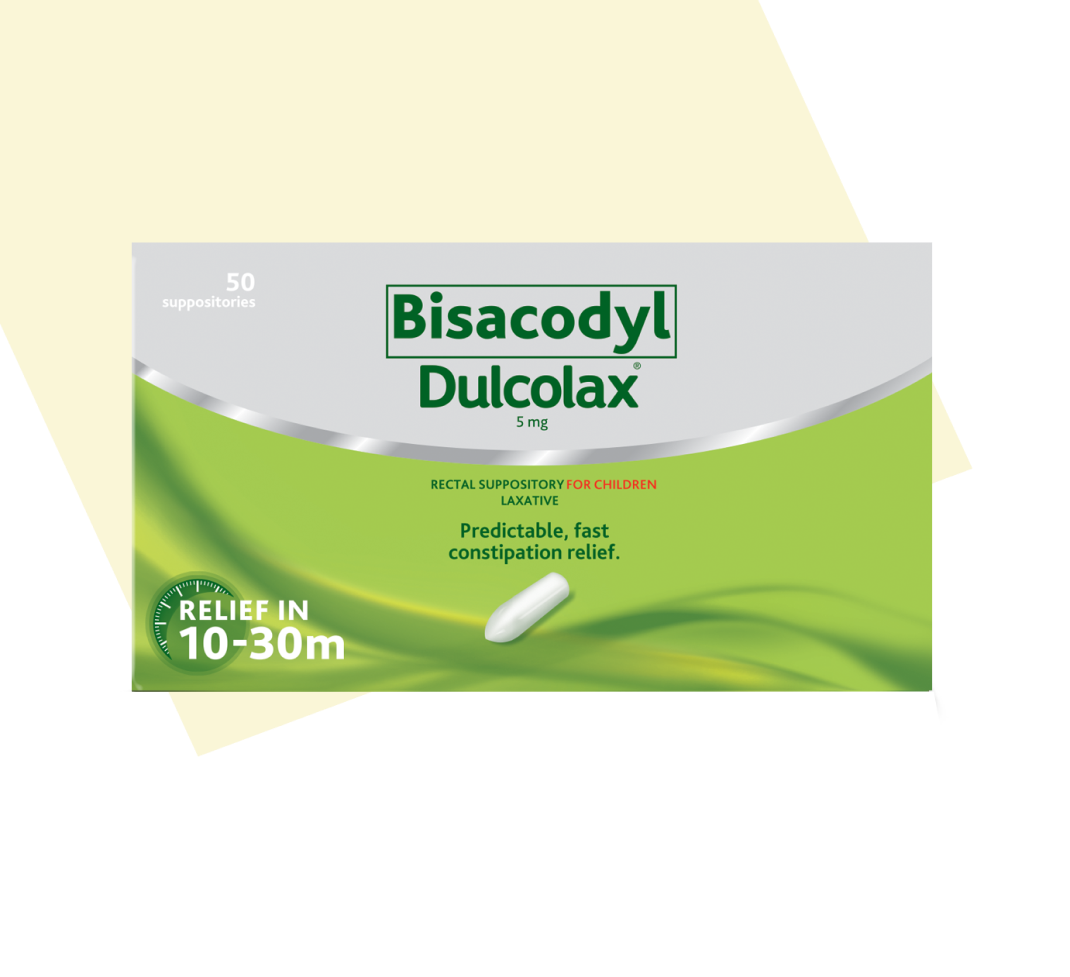What are the common symptoms of constipation?
The first step to deal with your body’s signals is to spot them and understand what they mean. However, each individual may experience symptoms of constipation differently. Here’s the common symptoms you can experience:
Irregular trips to the bathroom
Having fewer than three bowel movements per week may be an uncomfortable sign that your body is struggling to pass the food you consumed. Nevertheless, there is no right number of daily or weekly bowel movements. Being regular is different for each person.
Hard Stool
Meet Brandong Bigatin - When your stool feels dry, hard or when you experience excessive straining or pain during evacuation, or when you have the feeling of being blocked or of not having fully emptied your bowels.
Feeling bloated
If you’re like Bella Bundat and feeling bloated, this may be a result from irregular or insufficient bowel evacuations.
Abdominal discomfort and pain
When your belly is experiencing some trouble, you are susceptible to feeling discomfort and pain in that area.
Feeling of gassiness
Meet Kelly Kabag - one of the most common symptoms of constipation is the feeling of flatulence and gas.
Please be aware that the symptoms of constipation may resemble other medical conditions or may be caused by other health problems. To exclude these you should consult your doctor for a diagnosis, if symptoms persist consult your doctor.
What causes constipation?
Hard and dry stools are the result of too much water being absorbed by the body from the large intestine. When the colon's muscle contractions are slow or sluggish, the stool moves through the colon too slowly, resulting in too much water being absorbed2. Some of the most common causes of constipation include the following:

How to manage occasional constipation?
Don’t worry, there’s no need to change your whole routine! Start by trying to change small things to see how your body reacts and go from there. Here are a few simple tips to help yourself feel lighter:
Frequently Asked Questions
When you start talking about constipation, the same questions often pop up.
-
Women indeed suffer from constipation more often than men. This can be explained by the presence of estrogen and progesterone, hormones that directly interfere with transit in the intestines. Then, logically, during menstrual cycles, women may face a significant prevalence of constipation7.
Another reason leading to more constipation among women would be the role of the female pelvic floor in the action of emptying the intestines.
-
Constipation is one of the most common gastrointestinal disorders in adults. Factors that may increase your risk of constipation include:
The following people are at a higher risk of experiencing constipation:
- Being an older adult
- Being a woman
- Being dehydrated
- Having a diet that's low in fiber
- Getting little or no physical activity or people who are confined to bed due to a physical disability such as a spinal cord injury
- Taking certain medications, including sedatives, opioid pain medications, some antidepressants or medications to lower blood pressure
- Having a mental health condition such as depression or an eating disorder
- Being pregnant
-
Complications of constipation can include11:
- Swollen veins in your anus (hemorrhoids). Straining to have a bowel movement may cause swelling in the veins in and around your anus.
- Torn skin in your anus (anal fissure). A large or hard stool can cause tiny tears in the anus.
- Stool that can't be expelled (fecal impaction). Constipation may cause an accumulation of hardened stool that gets stuck in your intestines.
- Intestine that protrudes from the anus (rectal prolapse). Straining to have a bowel movement can cause a small amount of the rectum to stretch and protrude from the anus.
-
Treatment guidelines and results of clinical studies showed that these treatments are useful for functional constipation:
- Lifestyle modification. Lifestyle and dietary changes increasing fiber in your diet helps you to speed up the digestion of foods in your bowels.
- Laxatives, including osmotic laxatives such as macrogol or stimulant laxatives such as senna and bisacodyl.
- Probiotics. Those of the Bifidobacterium and Lactobacillus genera have been shown to increase stool frequency in adults and children.
-
There are many types of laxatives – each works somewhat differently to make it easier to have a bowel movement.
Stimulant laxatives
Stimulant laxatives including bisacodyl, the active substance in Dulcolax®, has a dual action: Stimulant laxatives induce water and salt transport into the gut which hydrates the stool and makes it easier to pass. In addition, stimulant laxatives stimulate the activity of bowel muscles causing your intestines to contract. These two effects jointly result in an acceleration of stool transit through the colon and have been proven to be very effective and safe in clinical studies. Effectively stimulating the bowel muscles speed up stool movement. They help get things moving.
Stool Softeners laxatives
Stool softeners are just that — products that help make hard, dry, painful stools softer. They work by softening the stool in the intestine, which makes it easier and more comfortable to pass. When used as directed, stool softeners are a safe, gentle way to keep things moving.
Suppositories laxatives
Medicated suppositories are a typically reliable fast-acting dosage form of stimulant laxatives that are inserted into the rectum. These suppositories which may contain bisacodyl or glycerin aid in moving stool out of the body by providing lubrication and stimulation. They stimulate the bowel muscles in the intestine to help encourage a bowel movement quickly within minutes.
Dulcolax© range of solutions
When feeling bloated, constipated, heavy or just discomfort, it can alter your everyday life. It can become frustrating to feel constipation symptoms even after trying to adapt your lifestyle to feel better. In cases of occasional constipation, you can turn to some active ingredients-based laxatives, such as bisacodyl.
Learn more about occasional constipation
Here you find answers to some of the most common questions about it. We offer guidance to you on how to get rid of constipation and how to maintain regularity.
- Udani JK, Bloom DW. Effects of Kivia powder on gut health in patients with occasional constipation: a randomized, double-blind, placebo-controlled study. Nutr J. 2013 Jun 8;12:78.
- Schiller LR. Review article: the therapy of constipation. Aliment Pharmacol Ther. 2001 Jun;15(6):749-63.
- Basilisco G, Coletta M. Chronic constipation: a critical review. Dig Liver Dis. 2013 Nov;45(11):886-93.
- Bharucha AE, Lacy BE. Mechanisms, Evaluation, and Management of Chronic Constipation. Gastroenterology. 2020 Apr;158(5):1232-1249.e3. doi: 10.1053/j.gastro.2019.12.034. https://doi.org/10.1053/j.gastro.2019.12.034
- Camilleri M, Ford AC, Mawe GM, Dinning PG, Rao SS, Chey WD, Simrén M, Lembo A, Young-Fadok TM, Chang L. Chronic constipation. Nat Rev Dis Primers. 2017 Dec 14;3:17095.
- Talley NJ, Jones M, Nuyts G, Dubois D. Risk factors for chronic constipation based on a general practice sample. Am J Gastroenterol. 2003 May;98(5):1107-11.
- Müller-Lissner SA, Kamm MA, Scarpignato C, Wald A. Myths and misconceptions about chronic constipation. Am J Gastroenterol. 2005 Jan;100(1):232-42.
- World Gastroenterology Organisation. Coping with common gastrointestinal symptoms in the community: a global perspective on heartburn, constipation, bloating, and abdominal pain/discomfort May 2013. J Clin Gastroenterol. 2014 Aug;48(7):567-78.
- U.S. Department of Health and Human Services National Institutes of Health (NIH) – National Institute of Diabetes and Digestive and Kidney Diseases (NIDDK). Constipation. 2018 https://www.niddk.nih.gov/health-information/digestive-diseases/constipation/definition-facts
- John Hopkins Medicine. Health conditions and diseases – Constipation. 2021. https://www.hopkinsmedicine.org/health/conditions-and-diseases/constipation
- Mayo Clinic 2019 https://www.mayoclinic.org/diseases-conditions/constipation/symptoms-causes/syc-20354253
%20(1).webp)



.webp/jcr:content/Disorder%20Page_Disorder%20Hub%20(1).webp)
.webp/jcr:content/Disorder%20Page_Children%20(1).webp)